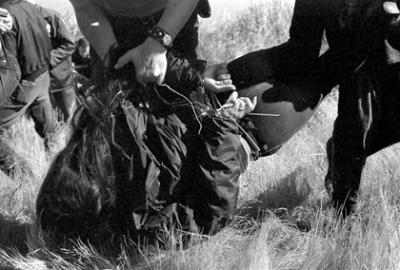
As Long As The Rivers Run

This is the season when Vashon’s home-bound salmon return to their natal streams. Coho and chum salmon swim up Judd, Shinglemill, Christensen, and Fisher Creeks to spawn and die, leaving their eggs in the gravel to start a new generation. These fish are few in number now, scanty survivors of runs that once filled the streambeds from bank to bank. Hatchery fish provided by Washington Department of Fish and Game have often been planted to supplement their numbers, but may have done as much harm as good by displacing younger native-born juveniles who were better adapted to Vashon’s unique stream conditions.
The native runs, after all, had had thousands of years to evolve to take best advantage of each stream’s unique combination of particular temperatures, insect hatch times, water flows, and other conditions. Likewise, the local sxwobabc people had been adapting to this place and the presence of these fish for more than 360 generations (considering archaeologist’s evidence that people have been here for over 9,000 years). They were pre-eminent fisherfolk, skilled with canoes, nets, spears, and fish weirs. And they thrived here among the abundant salmon for all those years not because of farming prowess or industrial accomplishments or ranching, such as the American immigrants brought with them in the middle 19th century, but because the native sxwobabc lived in synchrony with the natural cycles of sea and earth around them and respected the ways of fish.
And so it was that when Governor Isaac Stevens wrote the treaty presented to the native people at Medicine Creek in 1854, he specifically protected their ancient “right of taking fish, at all usual and accustomed grounds and stations …” One such “station” on Vashon Island appears in a photograph of Judd Creek in the special exhibit currently at the Vashon-Maury Island Heritage Museum. This picture of the Artemus Judd homestead, from about 1882-1883, shows the stream in the foreground flowing through an old fish weir.
Despite the treaty, the Washington State Game Department ignored native rights and consistently enforced severe restrictions on where, when, and how tribal fishermen could fish. The decades-long struggle between tribes and Game officials led to violent arrests, damage of fishing boats, and outright confiscation of expensive gear, finally culminating in the Boldt Decision forty years ago, which confirmed treaty protection of fishing rights. The brave acts of many Puyallup and Nisqually fishermen come back to life in a remarkable documentary film, “As Long as the Rivers Run,” with live footage of the native acts of civil disobedience on the Puyallup and Nisqually Rivers in the 1960s and 1970s.
On Thursday night, November 6 at 6:30pm, the Puyallup Tribe and the Vashon-Maury Island Heritage Museum will show this film and host five guests from the tribe to share their personal memories and perspectives on the fishing struggles and related tribal history. Ramona Bennett, Ray McCloud, David Duenas, Brandon Reynon, and Nicole Barandon will speak and then answer questions from the audience. This free event will happen at the Land Trust Building, 10014 SW Bank Road. This program is possible thanks to the special sponsorship of the Tribe, the Museum, and Humanities Washington. Other sponsors of the special exhibit and related programs are 4Culture, Puget Sound Energy, DIG, Beth de Groen, Rick’s Diagnostic & Repair Service, The Hardware Store Restaurant, John L. Scott Real Estate, and the Northwest School of Animal Massage
- Login to post comments
